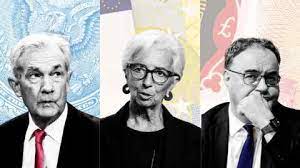Markets rise, peak, dip and then bottom out and when one market cycle is finished, the next one begins. Likewise, one of your stocks may see a 20% increase one year, the next it might shrink by a similar amount and the following year it might go up by 15%. So how can you strike a balance between your comfort level with risk and your chances of seeing your investments grow? The answer is diversification.
A well-diversified portfolio is key to long-term investing success since the better you spread your investments across different assets, the less severe will your aggregated losses be. Understanding the importance of distributing your wealth across several financial assets remains a cornerstone for value creation over-time.
Keep on reading to discover what diversification is, how it works and how you can diversify your portfolio.
What is diversification?
Diversification is a risk management strategy where the capital is allocated in a way that reduces the exposure to any one particular instrument. In order to achieve this, you must invest in a wide variety of investments. In this way, if one investment fails, another one will balance things out and increase your chances of good returns. Ultimately, investments are made up of underlying businesses which have their own cycle. Diversification ensures a variety of business cycles that aims to generate long-term returns. More importantly, diversification comes in various forms - at an asset class level by investing in multiple asset classes like stocks and bonds and within an asset class, for instance, by diversifying sector exposure within your equity exposure.
Why is diversification so important?
Let us assume you have invested in a commodity ETF like gold and in stocks. Your investment in gold has been performing well up until a few months ago, but currently it is bringing in negative numbers. On the other hand, your stocks have worked in your favour bringing in great returns. This means that you would have earned handsomely, despite losing upon one asset because your portfolio is diversified.
But before delving deeper into the advantages of diversification, it is important to understand risk and how diversification can help prevent it. All investments are subject to risk. And while investors are often rewarded for taking on some risk, it may also bring unwanted results. Broadly speaking, investors face two main types of risk when investing. The first is known as systematic or market risk. Events such as inflation, political instability, war, fluctuating interest rates can all affect the market in its entirety and not just one single company, industry or investing vehicle, however, due to the nature of this type of risk, it cannot be eliminated through diversification.
In contrast, unsystematic risk, also known as diversifiable risk is specific to a company, industry, market, economy or country and it can be reduced through diversification. Events such as supply chain disruption, loss in patent rights, disruptive technology to the company’s operations, strikes and even a slump in sales can cause unsystematic risk.

What are the advantages of diversification?
Diversification’s primary goal is to limit your exposure to risk, however, there are several other benefits that make diversification a must:
It can hedge against market volatility: the volatility of riskier assets can be offset by including diverse and unrelated instruments. Over the long-term, a diversified portfolio will have lower overall volatility, yet, each asset class can still generate its own optimal return. For instance, whilst many sectors were down in 2020 due to the COVID-19 pandemic, others boomed.
It increases exposure: a diversified portfolio will expose an investor to several different assets and sectors and this could lead to further opportunity. For instance, geographic diversification can make the most of emerging markets like that of Latin America and Asia. This could be particularly beneficial if for example a recession is creating market uncertainty in developed economies.
It helps preserve capital: not all investors are ready to invest aggressively. Those who are about to retire or have just started investing may prefer stability in their portfolio. Diversification can help protect your savings.
How can I diversify my portfolio?
The more varied your investments are, the better you will be able to mitigate any potential losses, but the right mix of investments will greatly depend on your financial goals and what you are trying to achieve. Here are some ways you can diversify your portfolio.
Diversify between different instruments
Stocks – stocks can be one of the most volatile asset categories, yet they have great potential for large returns. Find out more about how stocks work.
Bonds – these consist of government and corporate fixed-income debt instruments which are generally considered a safer option than stocks but their returns are also lower.
ETFs (exchange-traded funds) - a basket of securities that tracks an underlying index of various asset classes, these trade throughout the day, providing ample liquidity.
Funds – a fund is a way of investing money alongside other investors and can expose you to far more stocks or bonds that you would if investing directly in the market. With funds you can also access an array of geographical markets, a variety of specialist asset classes and industries.

Diversify within each type of instrument
To achieve this, you can invest in the following:
Companies of varying types and sizes - spread your investments across a number of companies and consider investing in those that operate in different market sectors. Just make sure you research each one before you commit.
Different industries – investing in a range of sectors has the same benefits as investing in different companies, however, consider the peaks and troughs that different sectors have gone through to make sure that your investments are spread across sectors with low correlation.
Investing in varied countries to gain international exposure - a good way to minimise the effects of market movements is to spread your investments across different countries and regions. Here again, conduct research into the markets of different countries and calculate the risks involved before choosing to invest abroad.
What is over-diversification and can it hurt your returns?
When done properly diversification is a tried and tested method for reducing risk, however, too much diversification, also known as over-diversification can hurt your performance, potentially decreasing your investment returns. Over-diversification can take place if you have invested in too many different asset classes which although may reduce the risk of any great losses, it can also limit your possibility for great gains.
How can you tell if your portfolio is over-diversified? Here is one possible example:
Owning too many individual stock positions
Having too many stocks in your portfolio can reduce the impact of large stock gains and may limit your upside. Although there is no clear and definite consensus as to how many stocks you should have in your portfolio, several studies and mathematical models indicate that you should have between 20 and 30 different companies to make sure that your stock portfolio is adequately diversified.
Ready to invest? Download the Moneybase Invest app from the Apple App Store or Google Play Store and gain access to thousands of stocks, bonds, ETFs and funds available in over 40 international stock exchanges.
Moneybase Invest is brought to you by Calamatta Cuschieri Investment Services Ltd and is licensed to conduct investment services business by the MFSA under the Investment Services Act.
Moneybase Invest offers direct market access and speed of execution and is intended for knowledgeable and experienced individuals taking their own investment decisions. The value of investments may go up and down and currency fluctuations may also affect investment performance.
The contents of this article are not intended to be taken as a personal recommendation to invest but strictly based on research and for information purposes only. Retail investors should contact their financial adviser for a suitability assessment prior to taking any investment decisions.





